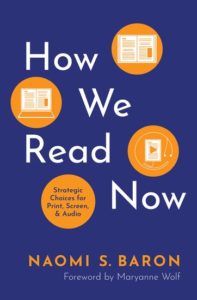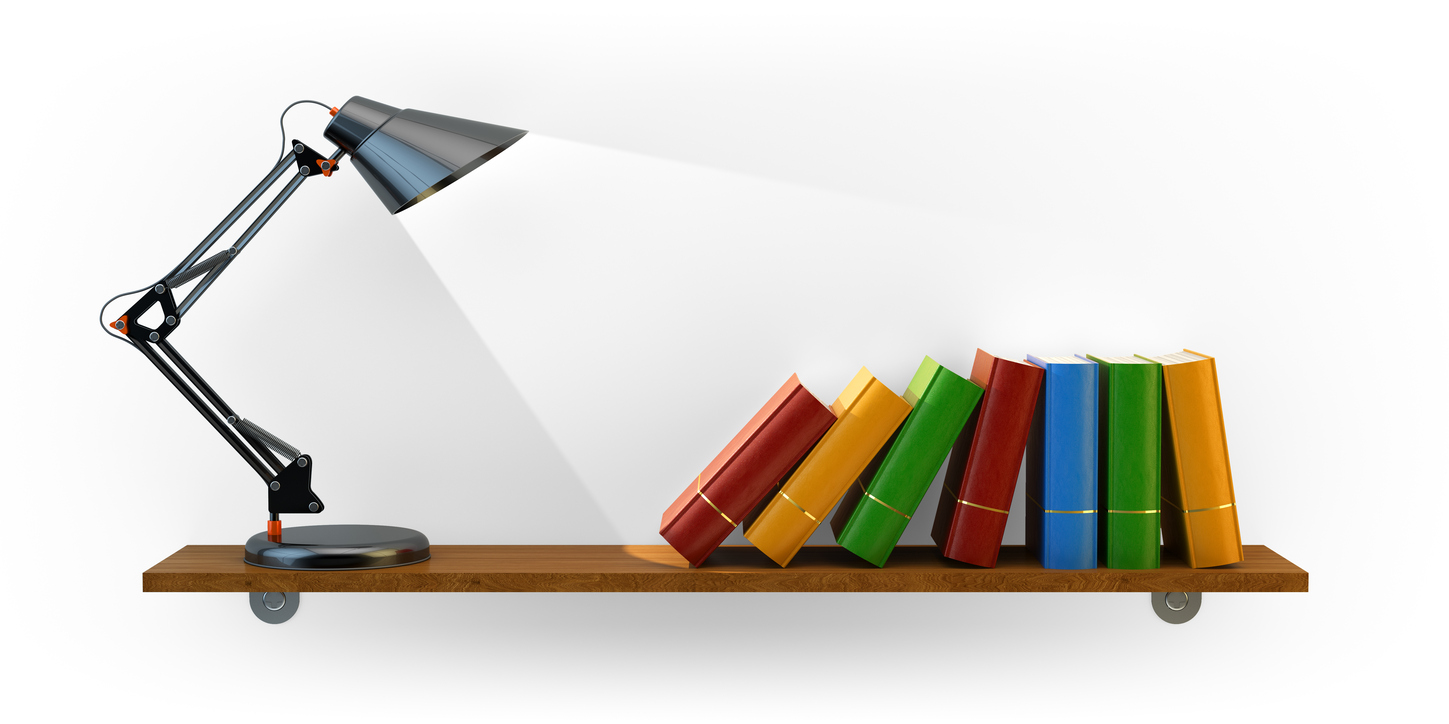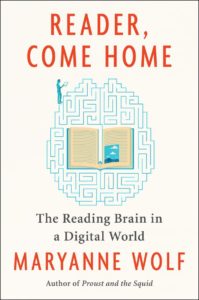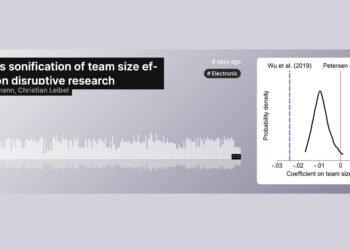We are reading more online all the time. Or, we are expecting more online reading all the time. Or, we are making more reading materials available online all the time. Or, we are investing in the capacity for more digital reading all the time. Or all of the above. Or just some of the above.
 We will be assessing the impact of the ongoing COVID-19 pandemic for a very long time, and perhaps particularly its differential impact across geographies, socio-economics, and race. And among the many effects of the pandemic on education, all of them also differential along these and other axes, the sudden shift to exclusively digital course delivery accelerated the provision and consumption of digital materials of all kinds for students, teachers, and researchers. In higher education, this shift was felt in library budgets, where an Ithaka-SR survey reported expenditures on e-books outpaced print for the first time. The shift to digital reading and to more libraries acquiring content that is exclusively digital was accelerated by the pandemic, with a whole history of industry and other priorities as context. Open Access is a movement that is focused, for example, on access not just to research but to research in digital format. The emphasis in expanding and intensifying STEM journal publications on digital platforms and discovery has pulled, as I and others have written, humanities fields along with its policies and practices.
We will be assessing the impact of the ongoing COVID-19 pandemic for a very long time, and perhaps particularly its differential impact across geographies, socio-economics, and race. And among the many effects of the pandemic on education, all of them also differential along these and other axes, the sudden shift to exclusively digital course delivery accelerated the provision and consumption of digital materials of all kinds for students, teachers, and researchers. In higher education, this shift was felt in library budgets, where an Ithaka-SR survey reported expenditures on e-books outpaced print for the first time. The shift to digital reading and to more libraries acquiring content that is exclusively digital was accelerated by the pandemic, with a whole history of industry and other priorities as context. Open Access is a movement that is focused, for example, on access not just to research but to research in digital format. The emphasis in expanding and intensifying STEM journal publications on digital platforms and discovery has pulled, as I and others have written, humanities fields along with its policies and practices.
But what does it actually mean to read digitally? In 2018 I wrote “Dear Reader, Are You Reading?” about what we know about digital reading practices, and how that maps onto what we know about the history of reading practices generally. The short version is that we still know very little about the former, even by comparison with the latter–particularly in relation to how much time and money we are spending on these platforms and this kind of content delivery. I drew on the then-recent work of Naomi Baron and MaryAnne Wolf, among others. Three years and a pandemic later, Baron now has another new book out, How We Read Now: Strategic Choices for Print, Screen, and Audio and she’s been writing op-eds and giving interviews to underscore her point about one of the things we really do know: digital and print reading are quite different activities that lead to different outcomes. In a recent essay historian Daniel Immerwahr described his own journey to what researchers have been describing as digital reading allowing for search and discovery, and for reading across platforms to acquire information, while print is a deeper, more focused activity that may produce better reflection and retention.
A wish for 2022? More reflection and more research on digital reading.
What are you doing, right now? Are you reading this blog post in your first language, or one of your first languages? Did you print this to read? Most likely, you’re reading on a mobile screen. As you recognize the shapes of letters, and the first few letters of each word, your brain will fill in the rest. That happens with full sentences, too. If you are reading on a screen, you’re likely reading in a pattern (maybe the Z pattern, or the F pattern) that will guide you in prioritizing the first set of information, sweeping down through the body of the text to “word spot” in grabbing context and capture some details, and then head to the end.

MaryAnne Wolf’s Reader, Come Home: The Reading Brain in a Digital World (2018) returns after 10 years to map a cognitive landscape that was only beginning to take shape in her earlier book, Proust and the Squid: The Story and Science of the Reading Brain (2008). Like Naomi Baron, whose Always On: Language in an Online and Mobile World was published in 2008 and Words on Screen: The Fate of Reading in a Digital World appeared in 2015, Wolf was a literary scholar first and became captivated by the study of language in action. In Baron’s case this meant a PhD in semiotics; in Wolf’s, in cognitive neuroscience. The challenge and the passion they share from different disciplinary perspectives and grounding, though each is extraordinarily creative in their multidisciplinary approach, is for reading. What is reading, and what is happening to reading?
These are historical as well as scientific questions, for reading itself is a highly politicized and romanticized activity. Cathy Davidson is another literary scholar who now works in education and technology; her 1986 Revolution and the Word: The Rise of the Novel in America sketched the anxiety (even hostility) of early American elites to the increasing variety and availability of novels, and what kind of awful ideas they might implant in their readers, especially women. Harvard scholar Leah Price, who met literature and never left it, is about to publish Overbooked: Dispatches from the Front Lines of the Reading Wars, which argues that an embrace of ever more accessible print, and its unique capacity to edify and refine individual readers and the body politic, is an artifact of the Victorian era.
In other words, might the digital revolution be another example of anxiety about new modes of communication? The angst associated with novels, for example, and the cultural degradation they engendered, could fill books. Actually, it already does fill scholarly analyses. But Wolf and Baron seem to have something else to hand, namely scientific study of what happens when the brain meets this fundamentally humanistic endeavor: literacy.
In Reader Come Home Wolf is looking to understand how our brains might be adapting to a new type of reading, and the implications for individuals and societies. The book is a combination of engaging synthesis of neuroscience and educational research, with reflection on literature and literary reading. Wolf’s nine chapters are styled “letters” to her reader. The first is about the new demands on the reading brain from the digital information explosion, followed by a closer look at the neuroscience of reading and the significance of neuroplasticity for adaption to digital texts. She spends several chapters on the current state of thinking about how children should be introduced to literacy, weighing the benefits of print versus digital presentation, and recommends developing a “biliterate brain,” capable of working in both registers. Finally, she worries about the social and political costs of the scattered attention and the superficial skimming for information that seems to characterize reading in the twenty-first century.
 The human brain was not designed for reading, a relatively late evolution that draws on core functions such as Vision and Language. (Nor was the eye, a fact I am reminded as mine grow increasingly weak from so much of it.) That neuroplasticity allows for such “genetically unplanned for activities” is incredible enough; the sheer variety of reading circuitry is made possible through plasticity, new cellular activity and specificity and networking. Reading incorporates “input from two hemispheres, four lobes in each hemisphere…and all five layers of the brain.” Wolf illustrates the brain function required for reading through the metaphor of the circus, with intense and complex activity happening in multiple arenas of Vision, Language, and Cognition at once. The circus spotlights, to take one example, are the attention paid to each part of the reading process, for example helping us to disengage from one task, move to another, and then focus on the new task. In the reading brain “as many things are happening in zigzagging, feed-forward, and feed-backward interactivity as are occurring linearly.”
The human brain was not designed for reading, a relatively late evolution that draws on core functions such as Vision and Language. (Nor was the eye, a fact I am reminded as mine grow increasingly weak from so much of it.) That neuroplasticity allows for such “genetically unplanned for activities” is incredible enough; the sheer variety of reading circuitry is made possible through plasticity, new cellular activity and specificity and networking. Reading incorporates “input from two hemispheres, four lobes in each hemisphere…and all five layers of the brain.” Wolf illustrates the brain function required for reading through the metaphor of the circus, with intense and complex activity happening in multiple arenas of Vision, Language, and Cognition at once. The circus spotlights, to take one example, are the attention paid to each part of the reading process, for example helping us to disengage from one task, move to another, and then focus on the new task. In the reading brain “as many things are happening in zigzagging, feed-forward, and feed-backward interactivity as are occurring linearly.”
Though she spends considerable, and considerably interesting, space on the neuroscience, Wolf’s heart isn’t in the brain itself, but in the connection of brain to heart and soul. Her third “letter” on deep reading is the key to concerns about the disruptions of the digital world. “Deep Reading” is beyond the “simple additive exercise in which all the perceptual and linguistic activities described earlier in the [circus] rings now take place for twenty [or more] words in a row.” Moving from “perception to comprehension” is evocative, and analytical. We feel, and we think, and we understand. And then we question, and understand anew. It is the deepest, empathetic acts of humanity to understand others and other perspectives, something Wolf (and the many champions of humanistic thinking she quotes) connects to the extraordinary act of reading.
“I think that reading, in its original essence, [is] that fertile miracle of communication effected in solitude….We feel quite truly that our wisdom begins where that of the author leaves off.”
Marcel Proust, On Reading (quoted in Wolf, Reader, Come Home)
As a good literary scholar, Wolf revels in reading the work that has shaped her own thinking, and which she felt extended her mind and thus her experiences. She waxes nostalgic about the importance of the complex sentence structure in nineteenth and early twentieth century novels, citing a circuitous passage from George Eliot’s Middlemarch about the circuitous “aimless meanderings” of Mr. Causubon’s own mind as an exemplar. There is no bleaker summary of our current, inattentive style, in which there seems little room for such meanderings, than tl; dr.
“For the prose writer: success consists in felicity of verbal expression, which every so often may result from a quick flash of inspiration but as a rule involves a patient search for the mot juste, for the sentence in which every word is unalterable, the most effective marriage of sound and concepts…concise, concentrated and memorable.”
Italo Calvino, Six Memos for the Next Millennium (quotes in Wolf, Reader, Come Home)

Is tl; dr partly a function of the medium? Wolf makes an impassioned case for the value of ink on paper, and although the science on this is not unambiguous, it does suggest that digital reading is a different kind of reading. This is what Baron was getting at in Words on Screen. Books are objects, and their materiality may be a key part of their success as an information technology. The role of touch in the multi-sensory experience of reading turns out to be as important as we intuit it to be when we hold a volume or turn a page — or better yet, when we mark it up. Book historians have long looked to the way we add our own marking to print as a cultural and historical indicator. Davidson’s analysis of the power of novels was based in part on the signatures claiming ownership and the marginalia indicating engagement with the text. As Wolf notes, citing Andrew Piper’s Book Was There: Reading in Electronic Times, “the sensory dimension of print reading adds an important redundancy to information — a kind of geometry to words — which contributes to our overall understanding of what we read.”
Studies are less sure about how digital reading is different, though respondents generally note that they feel they read more quickly and less carefully on screen than with paper. Research is conflicting about whether comprehension is degraded by digital text, with some showing no difference and others showing significant differences. Baron has recently reported the beginning of a broader study about digital versus print in terms of student preferences and performance which also summarizes these studies. A top line finding is that 80% of students surveyed preferred print when the costs were comparable, and 92% reported their concentration was improved with print. But given cost and portability, there were clear advantages to digital, too. What might be most important is the expectations that readers bring to these difference technologies. Students seemed to expect to spend more time and be more engaged by print, and so perhaps they are. Whereas they and we fully understand the minuscule attention spans that our digital world encourages. What Linda Stone called “continuous partial attention” is the result of constant stimulation and an effort to consume information without the next level processes of full comprehension and analysis.
For scholarly communications these are not small questions. The fate of the scholarly e-book (for another post, my travails of attempting to even acquire, let alone to “read” the mangled bits of text that appear on screen, regurgitated through the teeth of various vendor platforms) and the ways we have consciously designed it not to be read, but to be searched, and stripped suggests we have a notion already about what we want the digital to deliver. The JSTOR project to “Reimagine the Digital Monograph” contended with many of these challenges (if not the love of a long George Eliot passage on paper). Mostly the conclusion seems to be that print and digital will each have their place, that we will add new technology (digital) and not take away the old (print).
Yet there are resource implications and investment decisions being made all the time that for the most part are emphasizing digital transition. Digitizing long form has meant creating small, searchable pieces for extracting information/ data, rather than for ease of reading. Or even for encouraging reading. I hear a lot from scholarly communications professionals in all fields that values are imperative to practice. Wolf is arguing that we should value reading, because in doing so we value critical engagement. Wulf agrees.
Discussion
4 Thoughts on "Revisiting: Dear Reader, Are You Reading?"
“…we have consciously designed it not to be read”–Here’s the problem with digital resources, that people aren’t taught to read them so often don’t know how to think about them.
Thanks for reading and commenting! I saw someone note on Twitter that print and digital are both good–because they are different. I agree with that. I think we need better strategies for thinking about what it means to assume we can or should have only digital copies of long-form material in particular.
When I read a book, as opposed to a screen, I re-read an insightful sentence more frequently to get to its “harmonics”. I would therefore agree that screen reading encourages speed at the expense of depth. I will cite Pierre Alfert’s “chercher une phrase”: “After reading any sentence in a novel, its meaning continues to quiver, to morph, to palpitate, and futile would be the attempt to enclose its edges. Because you tugged on its meaning, you pinched its chord to hear its harmonics.”
An amazing quote:
“I think that reading, in its original essence, [is] that fertile miracle of communication effected in solitude….We feel quite truly that our wisdom begins where that of the author leaves off.”
Marcel Proust, On Reading (quoted in Wolf, Reader, Come Home)



